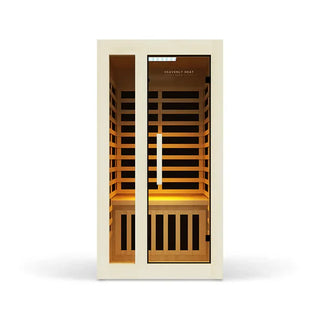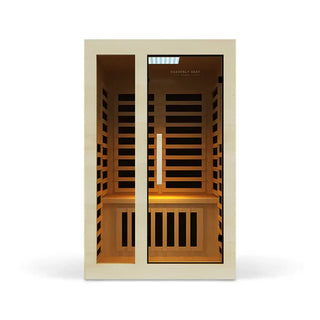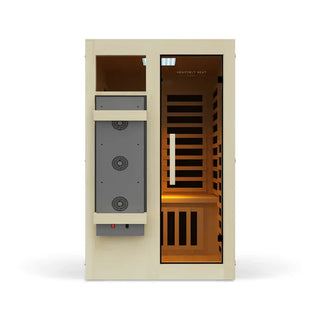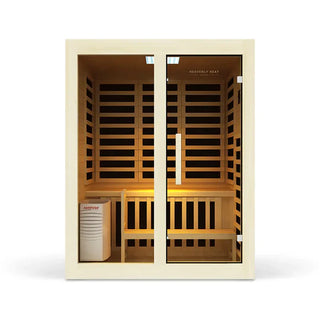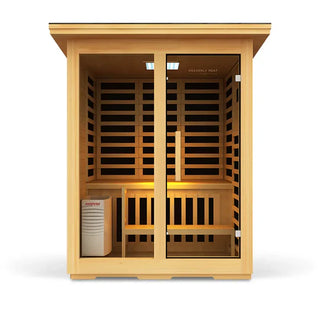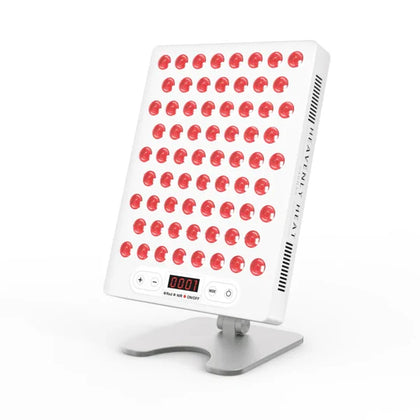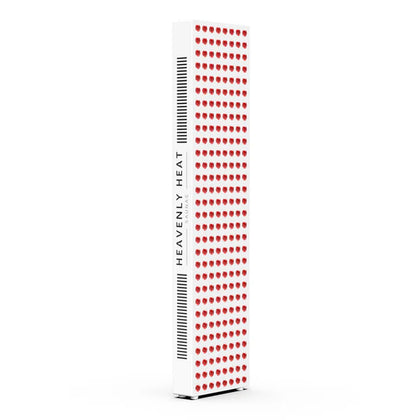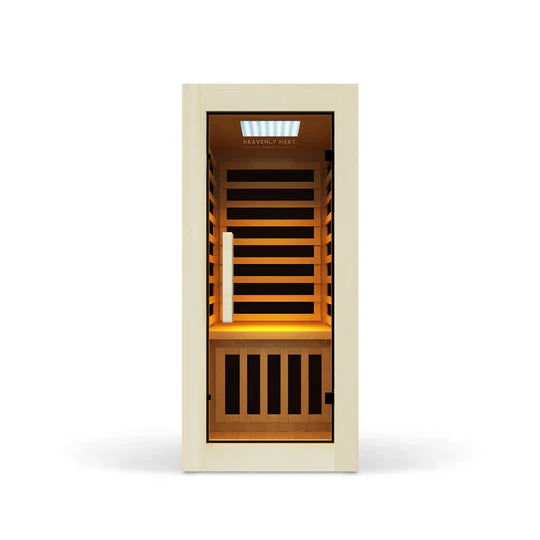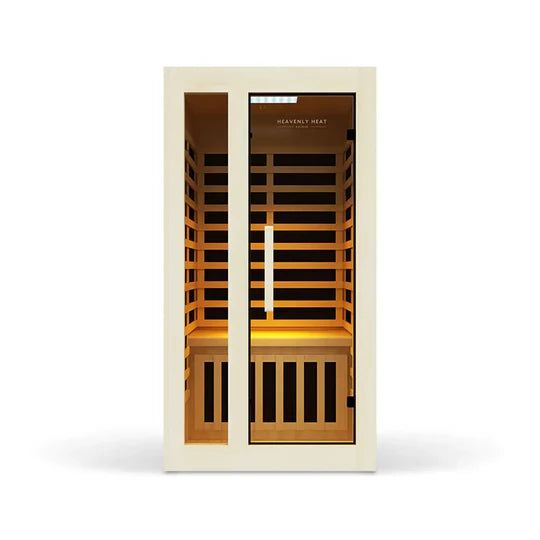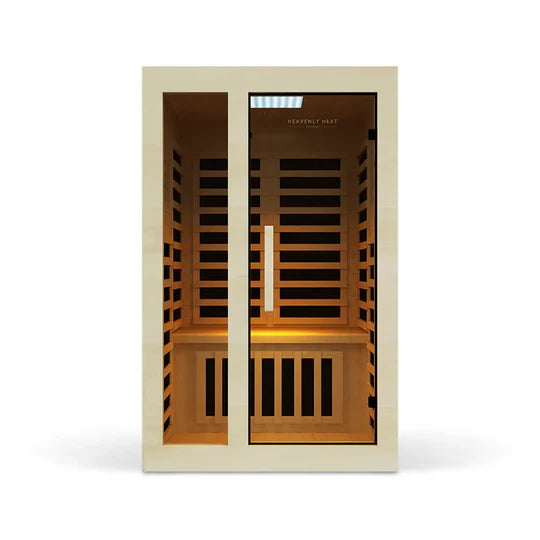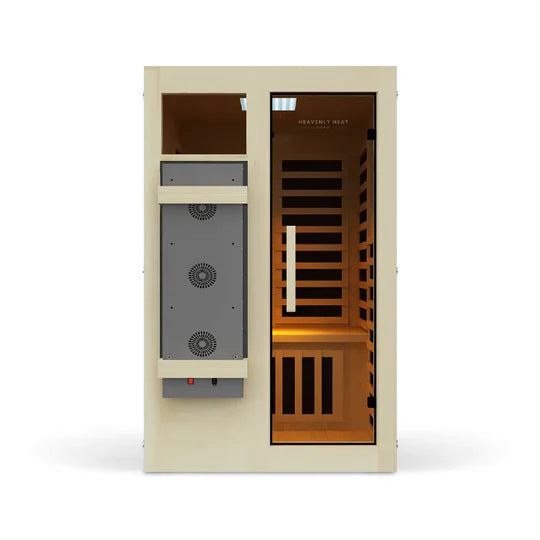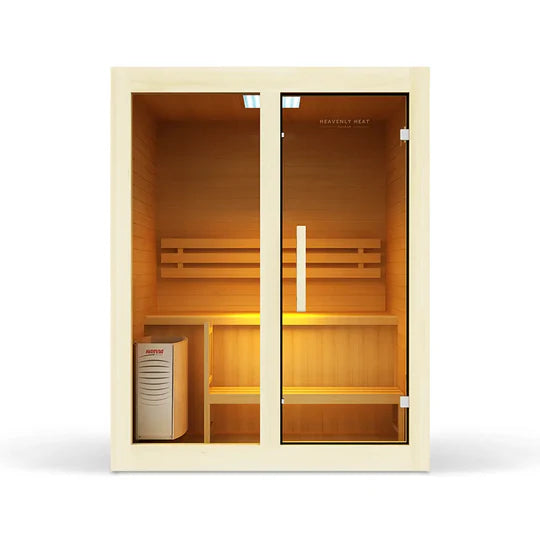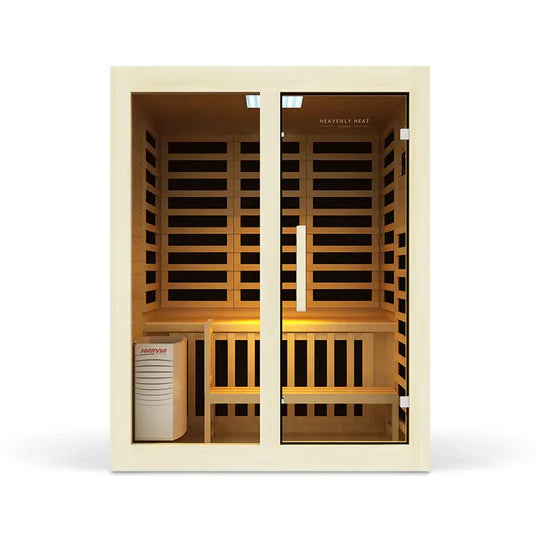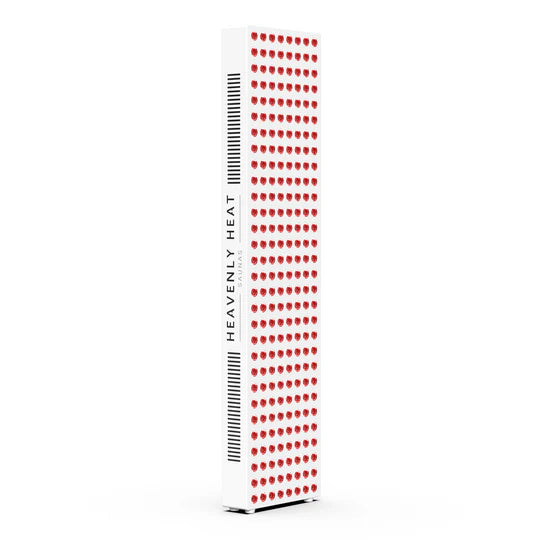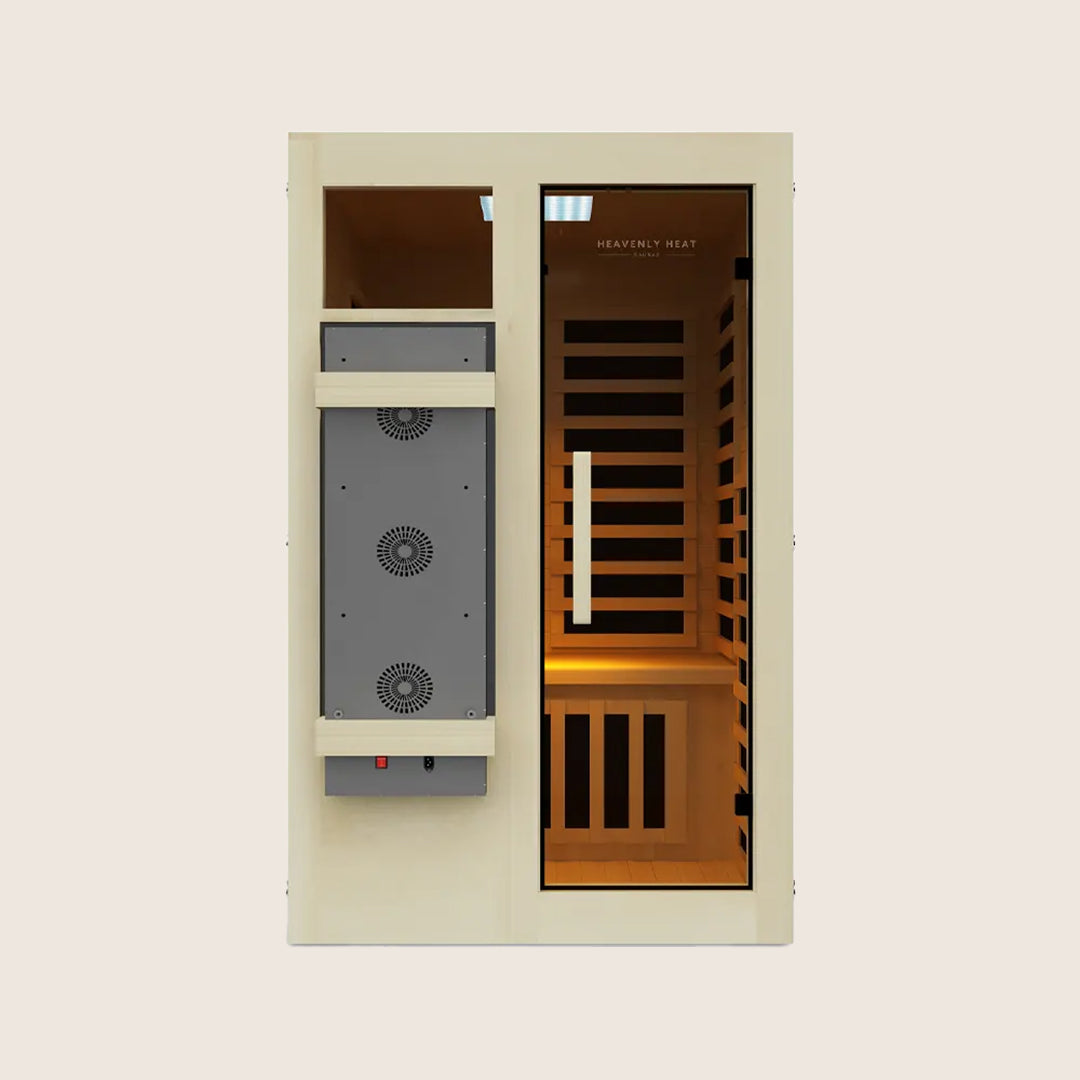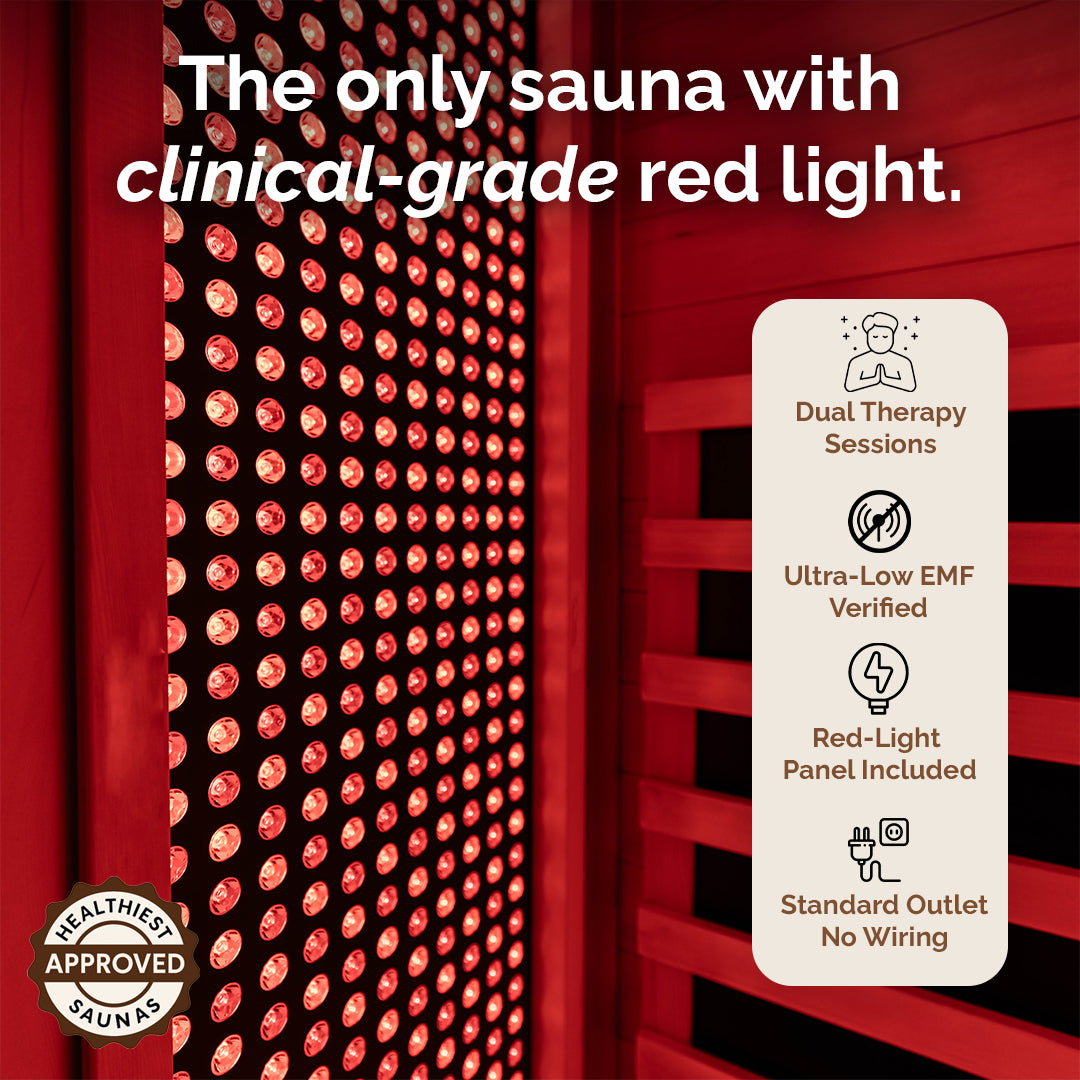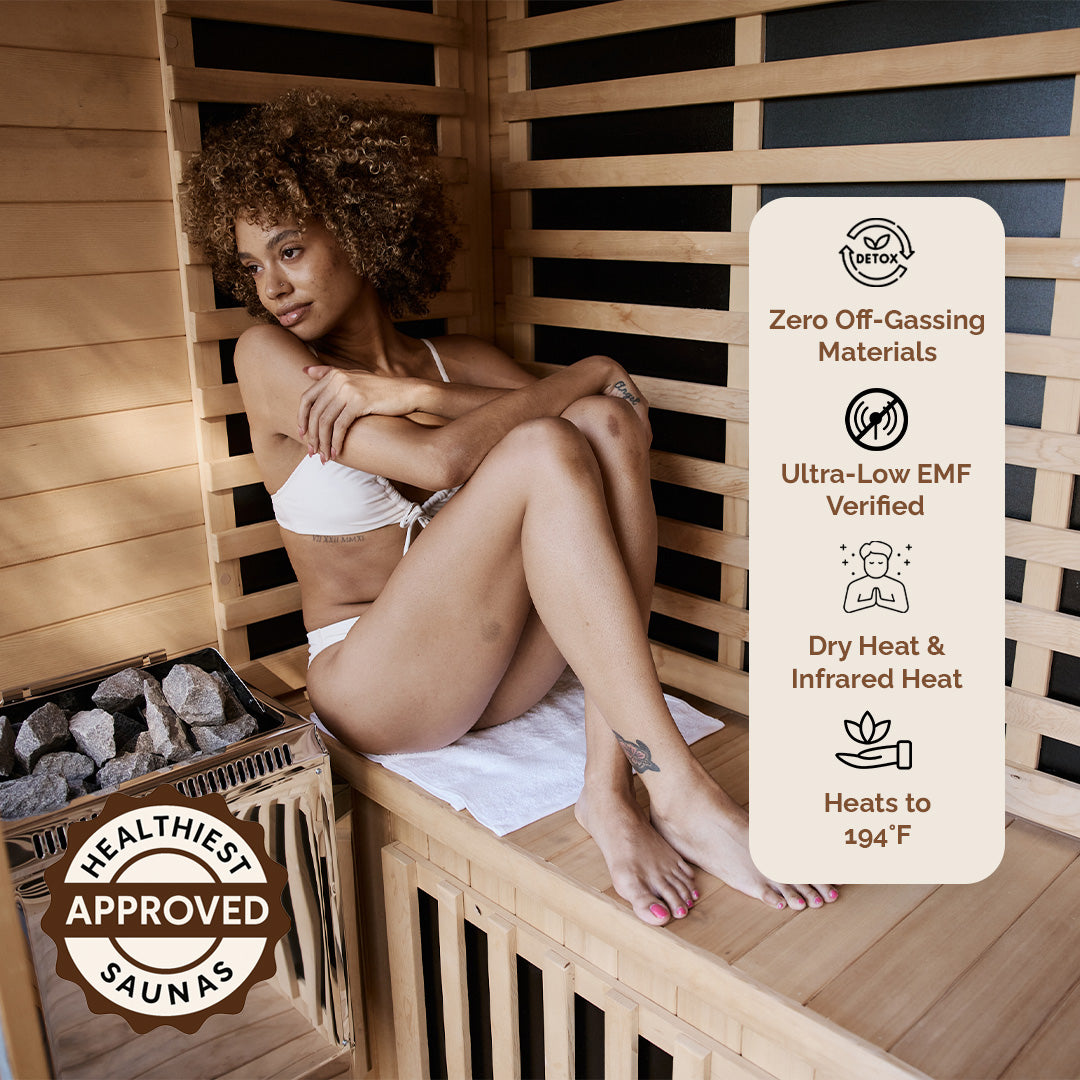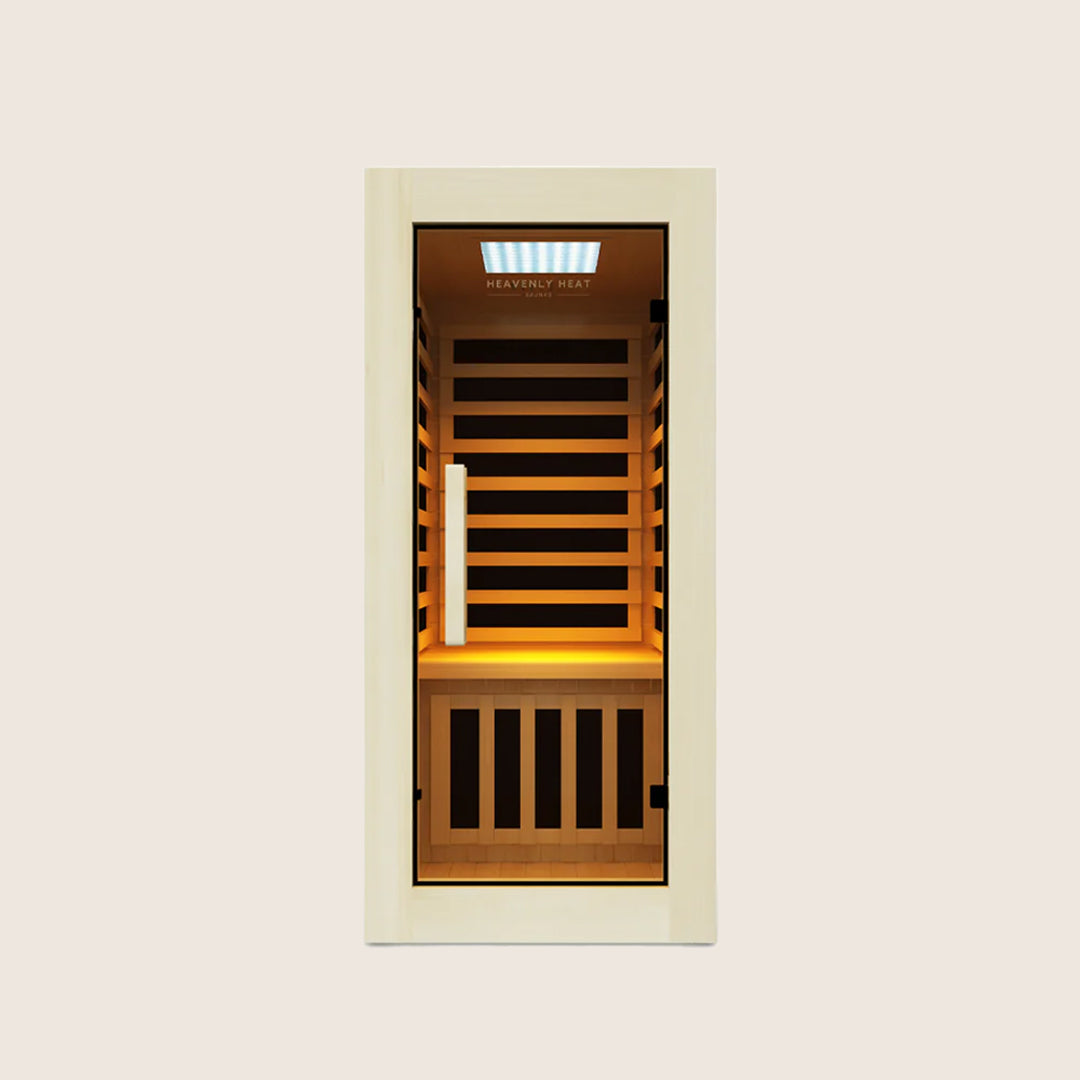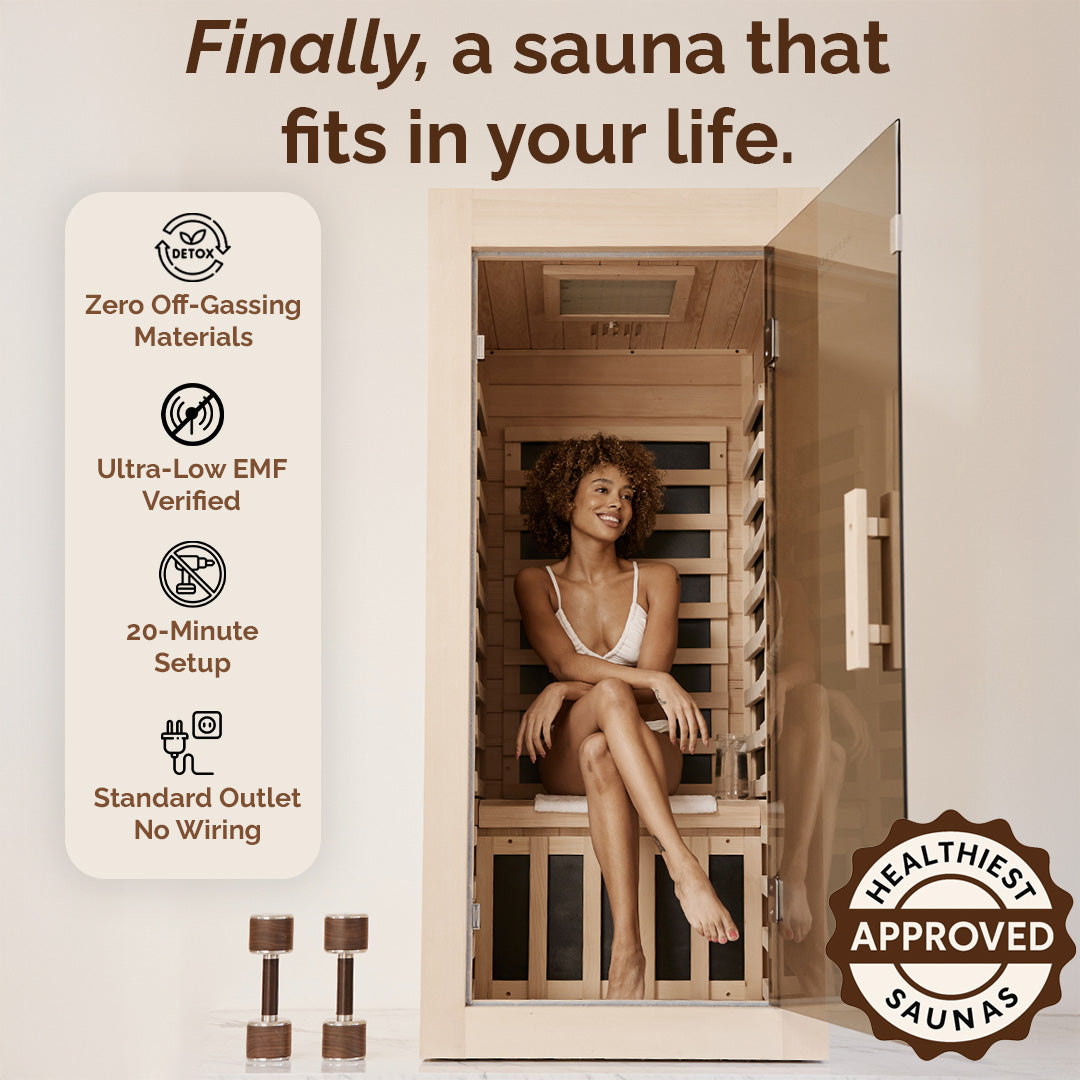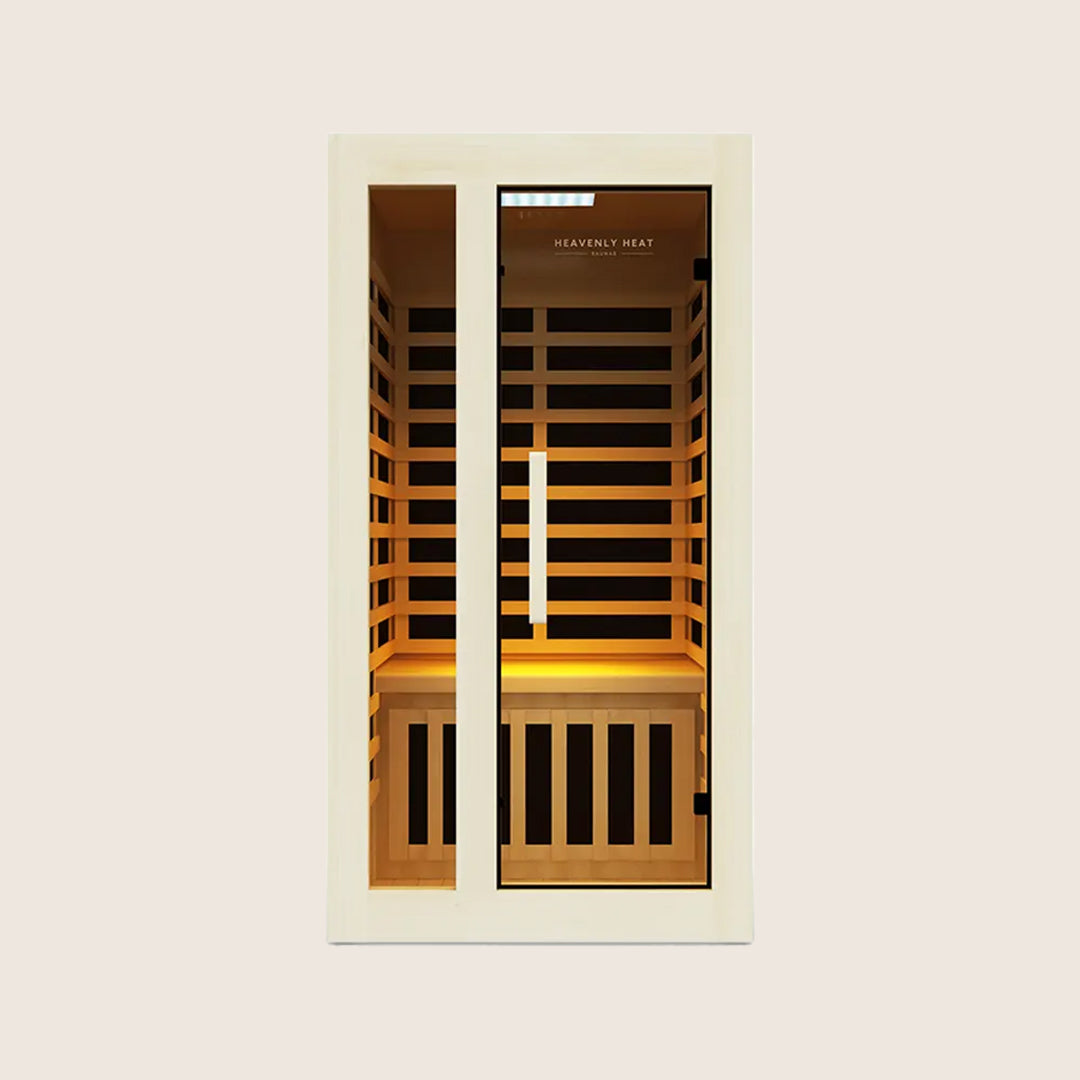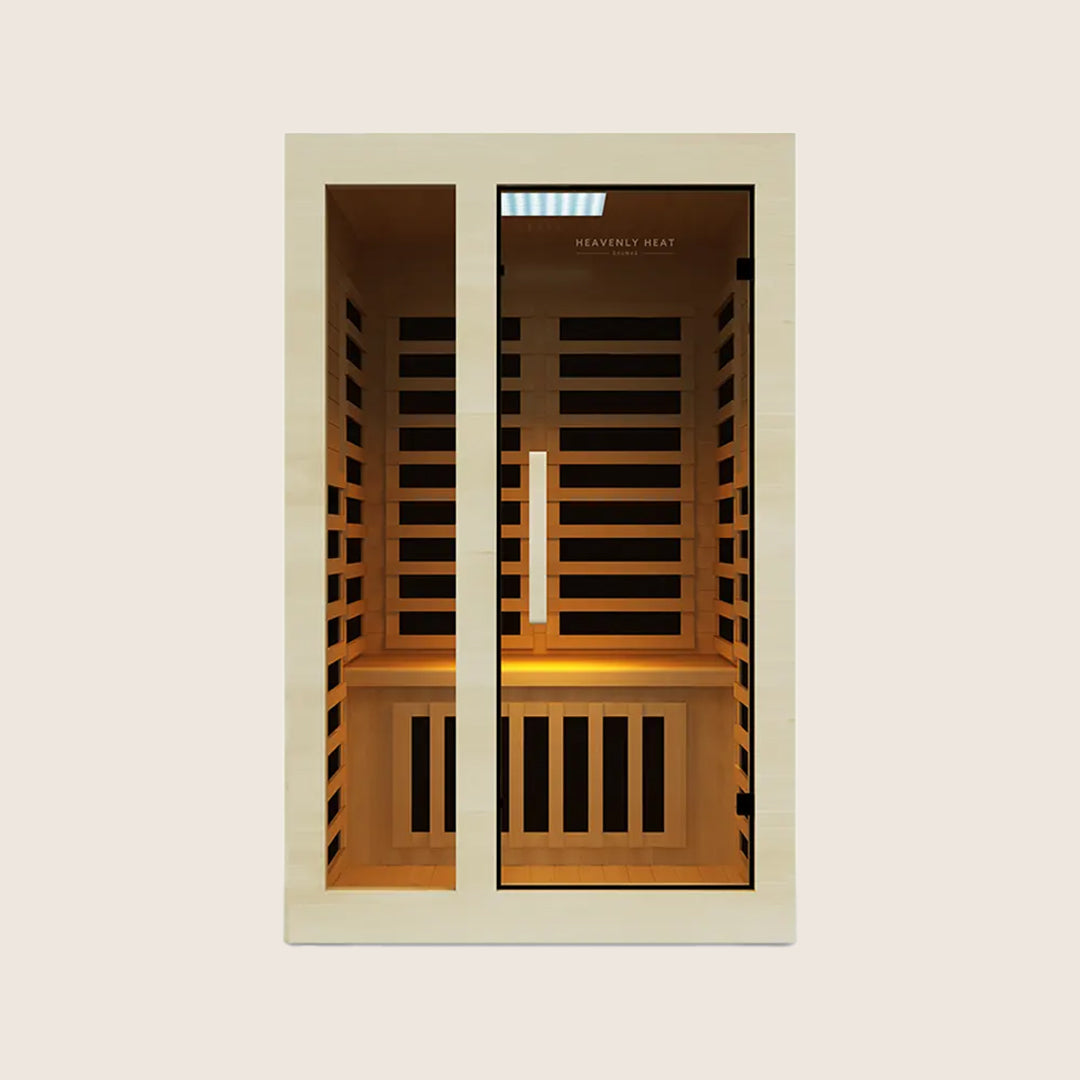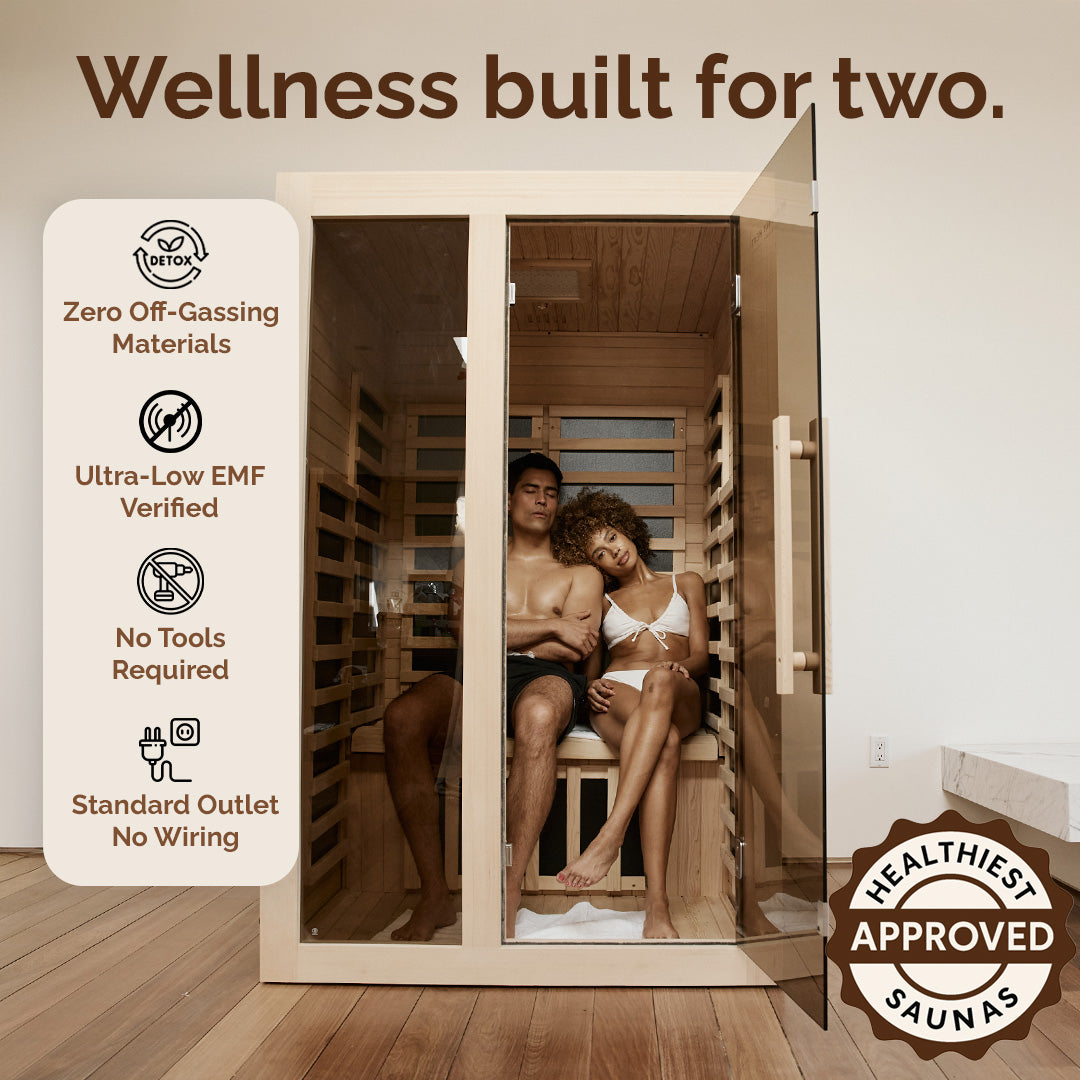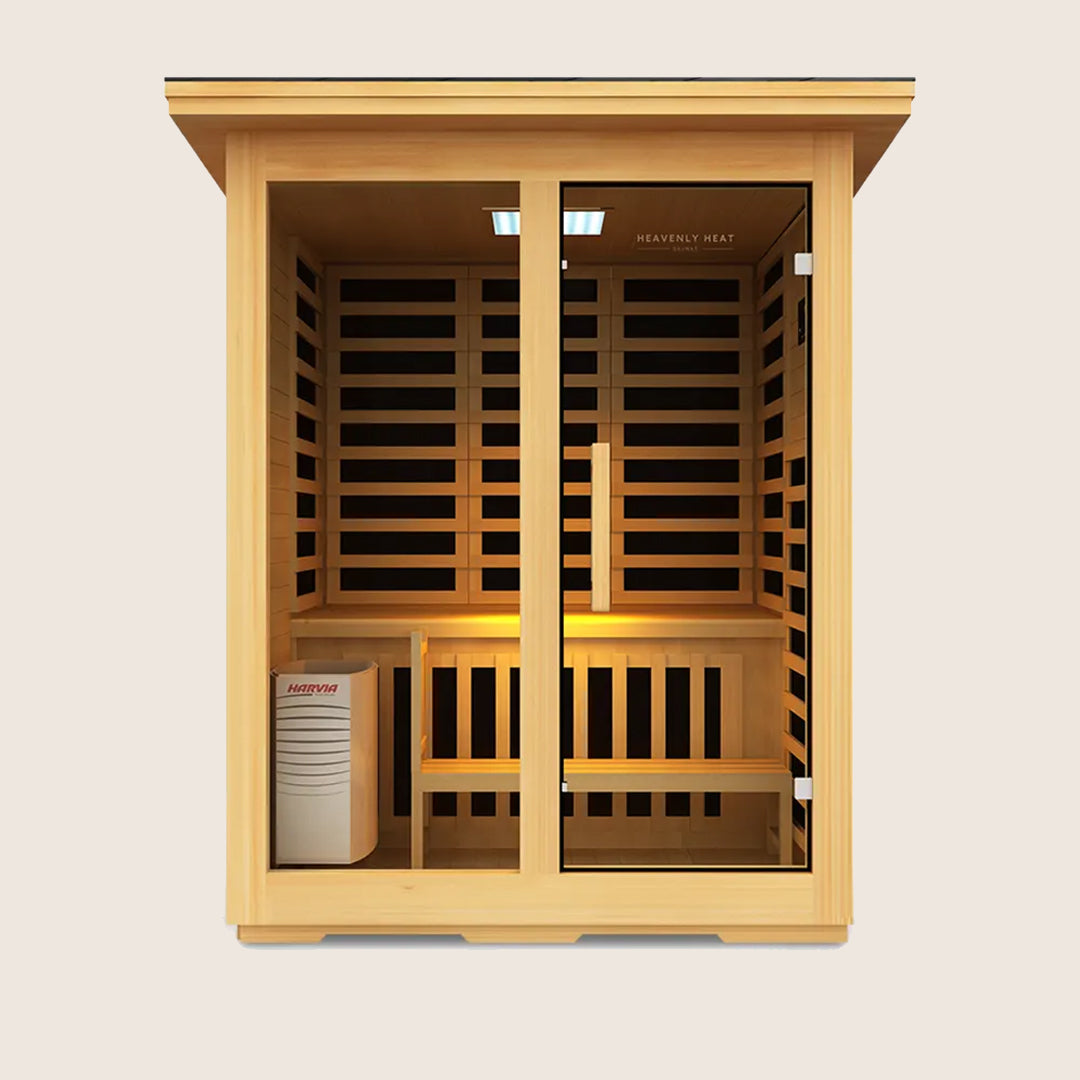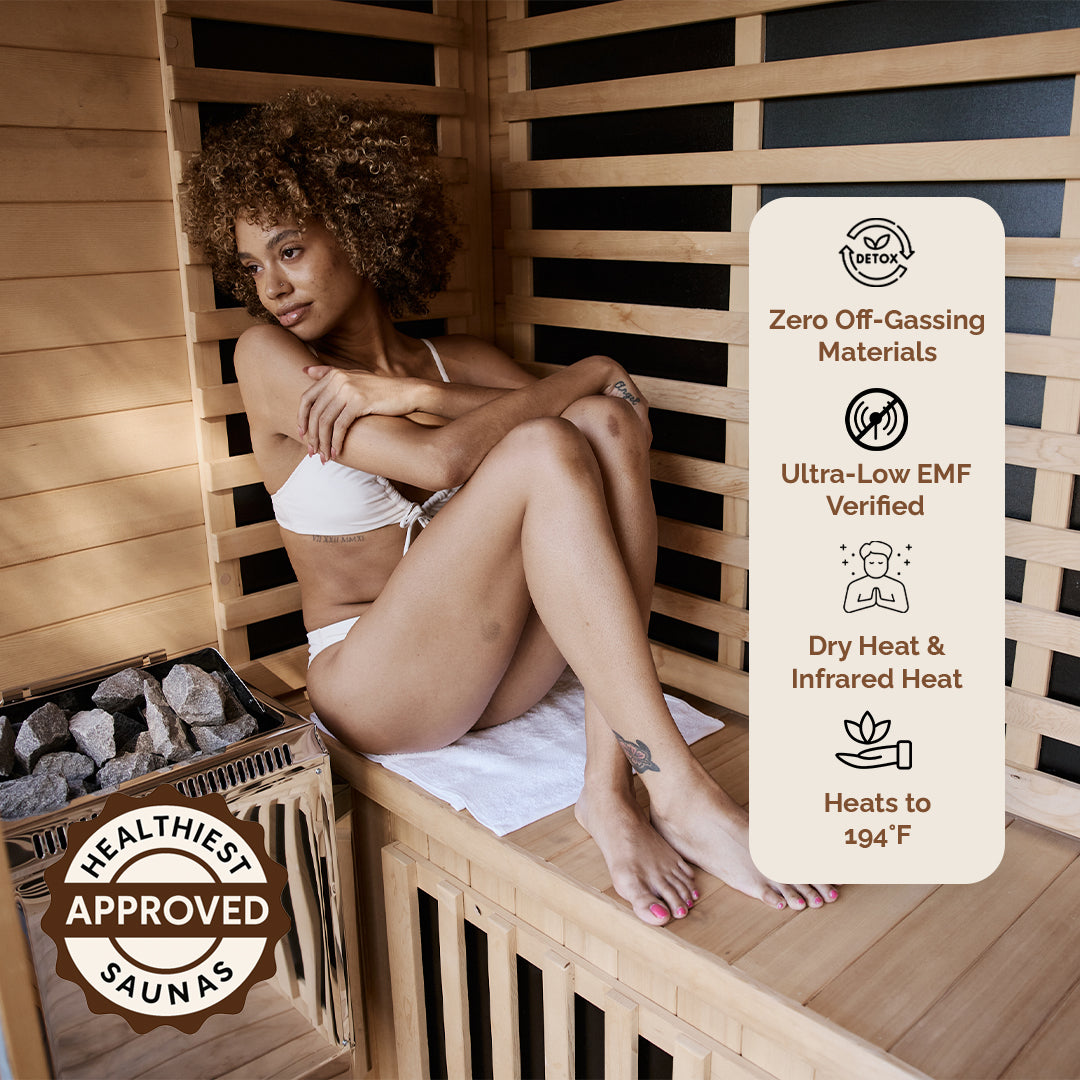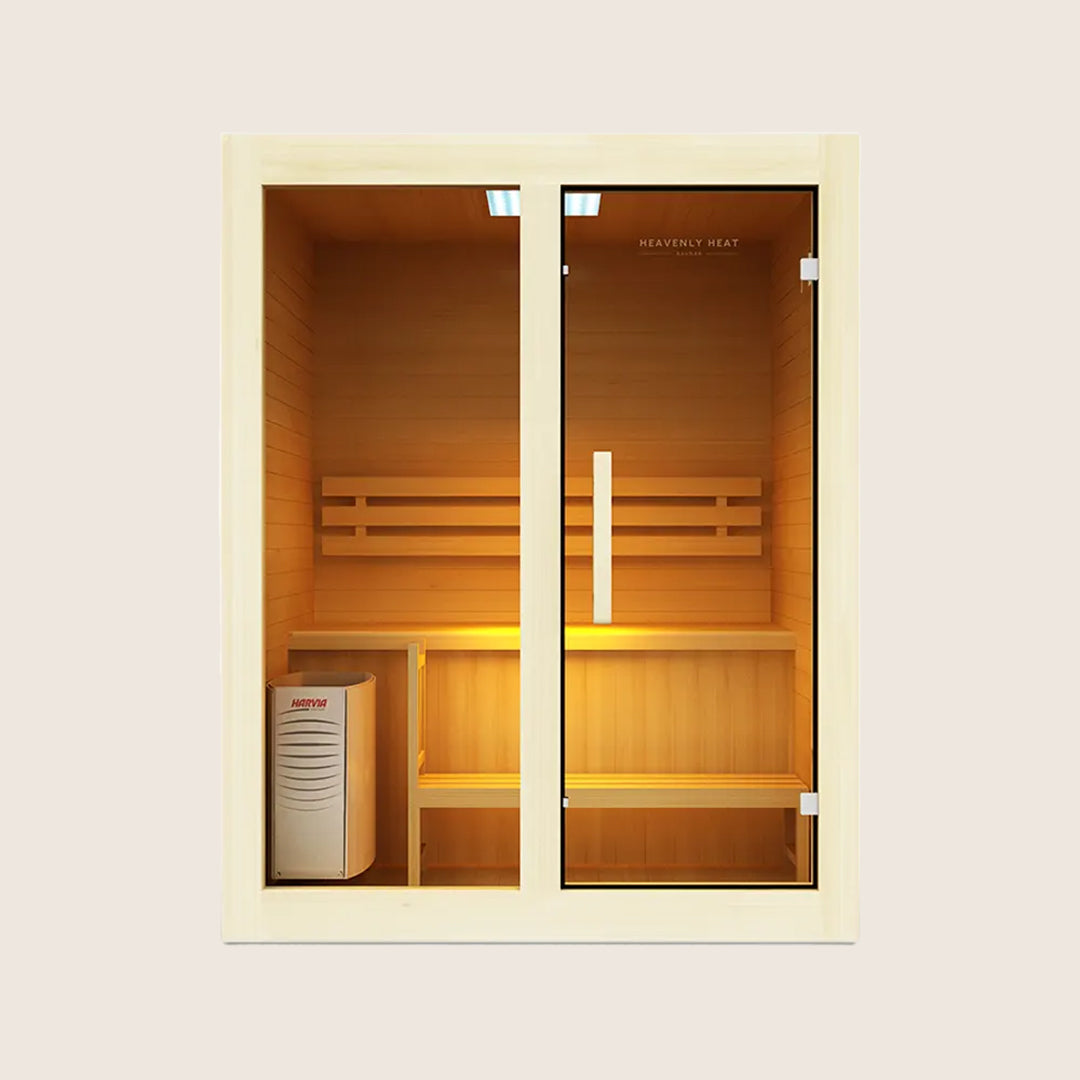Used Sauna vs. New Sauna: Which One Should You Choose?
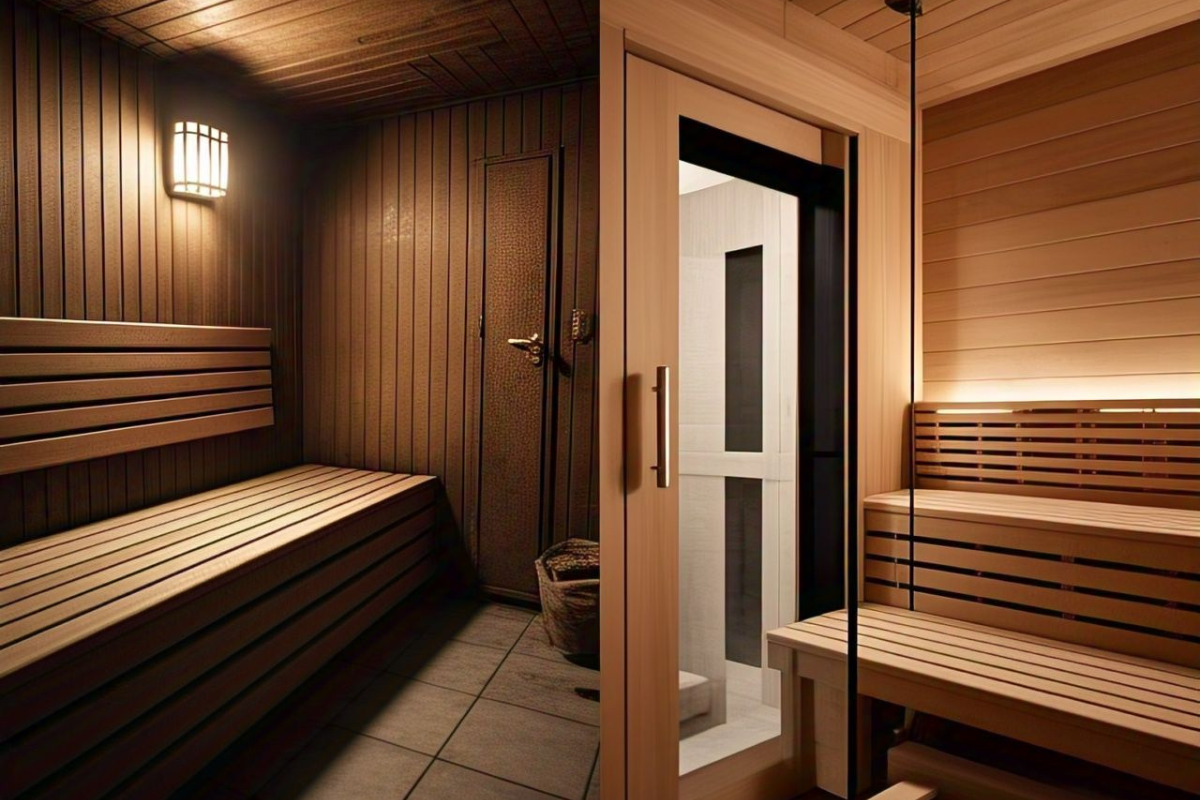
A sauna is an incredible investment in relaxation, detoxification, and overall well-being. But when it comes to buying one, should you go for a brand-new model or save money with a used one?
The wrong choice could mean hidden costs, repairs, or even safety risks. In this guide, we’ll break down the pros and cons to help you decide wisely.
Table of contents
Why Invest in a Sauna?
- Using a sauna is a simple way to feel healthier: Investing in a sauna is one of the best ways to improve your overall well-being. Regular sauna use helps your body flush out toxins, improves circulation, and supports heart health.
- It helps your mind relax and lowers daily stress: Dr. Joy Hussain , an integrative medicine doctor, points out that stress reduction is the number one reason people worldwide use saunas, highlighting their powerful role in building mental and physical resilience.
- Infrared saunas give your body more energy over time: Dr. Steven Gundry , a cardiologist, medical researcher, and author, explains that infrared saunas, in particular, help improve mitochondrial function, which plays a key role in energy production and longevity.
- The more you use a sauna, the more it helps your heart: Studies have shown that frequent sauna bathing can have significant long-term health benefits.
- "The more often you use the sauna, the stronger the health benefits," says Dr. Rhonda Patrick, a scientist and health educator.
- "People who sauna four to seven times a week are 63% less likely to die from sudden cardiac death than those who only go once a week."
Where to Buy a High-Quality Used Sauna?
- You can find many used saunas online, but be careful: If you're looking for a high-quality used sauna, you have several great options. Many online marketplaces, like eBay and Facebook Marketplace, offer a wide selection, but always check seller reviews and ask for detailed pictures.
- Buying a refurbished sauna from a brand is a safer option: Some sauna manufacturers sell refurbished or demo models, which can be a safer choice. These often come with warranties, giving you peace of mind when buying used.
- Specialty sauna stores may offer used models in great shape: Retailers specializing in saunas may also offer pre-owned units. These are often in excellent condition and have been properly inspected before resale.
- Wellness centers sometimes sell good-quality saunas when they upgrade: Physical stores and wellness centers sometimes sell their older saunas when they upgrade. These can be great finds if you're looking for commercial-grade quality at a lower price.
- Buying from a seller is cheaper, but stores offer more peace of mind: While buying from an individual seller might be cheaper, a sauna retailer often ensures better quality and reliability, making it a smarter long-term investment.
Cost Comparison: Used vs. New Saunas
- More people are spending on saunas than ever before: Buying a sauna is a big decision, and cost plays a huge role. The sauna and spa market has been growing rapidly, increasing from $3.97 billion in 2024 to $4.22 billion in 2025 at a 6.2% annual growth rate. This surge shows that more people are investing in saunas for their health and well-being.
- A new sauna costs more, but it’s a safer bet: A new sauna can range from $2,000 to over $10,000. While you pay more upfront, you're getting something brand-new with no wear and tear, and likely under warranty.
- Used saunas are cheaper, but they can come with hidden problems: Used saunas often cost 30–50% less than new ones. That sounds like a great deal, but older units may need repairs, new heaters, or upgraded wiring. These extra costs can add up quickly.
- Installing a used sauna might cost more than expected: Installation costs vary. Some used saunas need adjustments or upgrades before they can be safely used, while most new saunas are designed for easier setup.
- Older saunas can use more electricity and raise your bills: Used models are often less energy-efficient than newer ones. Over time, this means you could end up paying more in electricity with an older unit.
- You might save money now with used, but new can be cheaper in the long run: While buying used saves you money at the start, ongoing costs like maintenance, installation, and energy use might make a new sauna more affordable over time.
Performance and Efficiency Differences
- A new sauna works faster and uses less energy: A brand-new sauna usually performs better because it heats up more quickly and runs more efficiently than a used one.
- Old saunas may lose performance over time: As saunas age, parts like the heater and insulation can wear out, making them less efficient than when they were new.
- Taking care of your sauna helps it last longer: Even an older sauna can still work well if it’s been regularly cleaned, maintained, and properly cared for.
- Replacing old parts can make a big difference: Upgrading a few key parts, like the heater or insulation, can bring a used sauna closer to the performance of a new one.
- Infrared saunas can feel gentler but still work well: According to Dr. Melissa Young , infrared saunas are often more comfortable for users while still offering the same health benefits as traditional ones.
- Good sauna use is part of a healthy routine: Using a sauna is great, but combining it with good sleep, healthy food, and stress control is what really improves your long-term health.
Maintenance and Upkeep Considerations
- Used saunas need more maintenance than new ones: A used sauna needs more frequent maintenance than a new one because its components have already seen wear.
- Old saunas often have heater and wiring problems: Common issues include heater inefficiency, wood deterioration, and electrical problems.
- It’s important to check for damage before buying: Before buying a used sauna, check for cracks, mold, and faulty wiring to avoid costly repairs.
- Repairs on old saunas can get expensive over time: Over time, repair costs add up, making a new sauna a better long-term investment.
- You’ll need to reseal and re-stain the wood regularly: To keep an older sauna in good shape, reseal and re-stain the wood regularly.
- New saunas come with warranties that save money: Unlike used saunas, new ones often come with warranties that cover maintenance, reducing unexpected expenses.
- New saunas are less work and less worry: A new sauna means less hassle, while a used one requires extra care.
Health and Hygiene Concerns
- Used saunas can collect germs if not cleaned regularly: A used sauna can collect bacteria and mold over time, especially if it wasn’t properly maintained.
- Mold often hides in corners and vents: To check for mold and mildew, inspect corners, benches, and ventilation areas for dark spots or musty smells.
- If there’s mold, a deep clean is necessary: If you find any, deep cleaning is a must. Scrub the surfaces with a sauna-safe disinfectant and let everything dry completely.
- Sweat stains and bad smells come from poor upkeep: Poor maintenance can also lead to hygiene issues like sweat stains and lingering odors.
- Dirty saunas can lead to skin problems: In some cases, unclean saunas may cause skin infections.
- A clean sauna helps your body get rid of toxins: Dr. Sara Gottfried , a board-certified gynecologist and author, points out that sweating plays a key role in detoxification, helping the body eliminate toxins through the skin.
- New saunas stay cleaner because you control the care: Compared to used ones, new saunas are much easier to keep clean since you control their upkeep from the start.
Durability and Lifespan of Saunas
- A sauna can last up to 30 years if built and maintained well: A well-built sauna can last 15 to 30 years. How long it lasts depends on the materials used, how well it’s taken care of, and where it’s located.
- Using strong wood helps your sauna last longer: Wood like cedar or hemlock resists warping and holds up over time, while cheaper materials can break down faster and shorten your sauna’s life.
- Saunas are built to last—just look at Finland: Finland has around 3.3 million saunas for 5.5 million people. That’s more saunas than cars, showing how long-lasting and important they are in daily life.
- A well-maintained sauna gives you benefits for decades: When taken care of properly, a sauna isn’t just for the short term, it can offer years of comfort, relaxation, and health benefits.
- Cleaning and checking your sauna keeps it in good shape: Regular tasks like cleaning, sealing, and checking for wear and tear help your sauna stay safe and work well for many years.
- Old or poorly cared-for saunas don’t last as long: Used saunas wear out faster, especially if they weren’t maintained. Signs of trouble include wood cracks, rusted heaters, and weak heat.
- Taking care of your sauna now means fewer problems later: Putting effort into care today helps your sauna stay strong, safe, and enjoyable for a long time to come.
Warranty and Support Differences
- New saunas usually come with a long warranty: When you buy a new sauna, you typically get a solid warranty that lasts several years. This gives peace of mind if something goes wrong.
- Used saunas often don’t have any warranty left: Most used saunas have little or no coverage remaining. And since many companies don’t allow warranty transfers, it’s smart to check the policy before buying.
- Refurbished saunas come with shorter warranties: While some refurbished saunas include a warranty, it's usually limited and shorter than what you'd get with a new one.
- New sauna owners get fast and direct support: Buying new means you can contact the manufacturer for help. They usually offer better and faster customer service.
- Used sauna buyers might have trouble getting help: If you buy used, getting support can be tricky, especially if the original manufacturer doesn’t assist second-hand owners.
- Finding parts is easier for newer saunas: Replacement parts for new models are easier to get. With older or used saunas, parts might be hard to find or more expensive.
- Support gets expensive once the warranty runs out: After the warranty ends, getting help or repairs often costs extra, or may not even be available anymore.
Installation and Setup Challenges
- Setting up a new sauna is usually quick and simple: New saunas typically come with all the parts you need and clear instructions. This makes the setup process much smoother, especially if you’re doing it yourself or with minimal help.
- Used saunas often have missing or damaged parts: When buying a used sauna, you might find that some parts are worn out or missing completely. This means you’ll spend extra time searching for replacements before you can even start the setup.
- Old sauna wiring might not be up to today’s safety standards: Used saunas can come with outdated electrical wiring, which might need upgrading. This can be tricky and often requires professional help to make sure it’s safe and up to code.
- Fixing issues with a used sauna takes more time and effort: Used saunas don’t always come with manuals or support, so figuring out what’s wrong can be frustrating. Troubleshooting takes longer because you’re working without a clear guide.
- A new sauna saves time and avoids surprise problems: Compared to used ones, new saunas offer a much smoother experience. There are fewer unexpected issues, and you won’t have to waste time fixing or replacing things right from the start.
Energy Efficiency and Power Consumption
- New saunas use less electricity because they’re built to save energy: A new sauna uses less power than a used one because modern models come with better insulation and energy-saving technology.
- Old saunas often waste more power due to wear and outdated parts: Older saunas often consume more electricity due to worn-out heating elements and outdated designs.
- Bad insulation makes saunas work harder and use more energy: The insulation quality also plays a huge role, poor insulation forces the heater to work harder, increasing energy use.
- Smart features in new saunas help lower power bills: Newer saunas also have smart features like programmable timers and improved heating systems that reduce power consumption.
- All these improvements make new saunas more energy efficient: These advancements make modern saunas the better choice for energy efficiency.
Customization and Smart Features
- You can choose everything—wood, lights, seats, and more: New saunas let you personalize almost every part, from how it looks to how it feels when you sit inside.
- Smart features let your sauna follow your routine: Things like voice control, set-it-and-forget-it sessions, and separate temperature zones make your sauna work the way you want.
- Even an old sauna can be upgraded with smart tech: You don’t need a brand-new sauna to enjoy smart features, you can add Wi-Fi and control it from your phone.
- Add music, color lights, and digital controls for more comfort: Bluetooth speakers, mood lighting, and easy thermostats make every sauna session more relaxing and fun.
- New saunas come with more smart options built-in: While you can upgrade an old sauna, a new one usually gives you more smart features right from the start.
Resale Value and Depreciation of Saunas
- Saunas made with better wood keep their value longer: A sauna’s resale value depends on many factors, but some hold their worth better than others. High-quality wood, like cedar or hemlock, keeps a sauna valuable longer, while cheaper materials wear down faster.
- Well-known sauna brands are easier to resell: Popular sauna brands tend to hold their value better because buyers trust names they recognize and associate them with reliability and quality.
- A well-maintained sauna loses value much slower: Regular upkeep plays a big role in keeping resale value high. On the other hand, heavy use and lack of care can cause a sauna’s value to drop quickly.
- Upgrades help, but only if buyers see the benefit: Improving features, like better heaters or smart controls, can increase resale price, but only when buyers feel those features are useful or desirable.
- Infrared and quality traditional saunas hold value best: Infrared saunas and solidly built traditional saunas tend to resell better than lower-end models. Choosing wisely from the start can mean a sauna that stays valuable for years.
Factors to Consider Before Buying a Used Sauna
Check the Overall Condition
- Check for any visible damage right away: Before buying a used sauna, inspect it carefully. Look for any visible signs of wear, such as cracks, scratches, or broken parts.
- Make sure there’s no water damage or mold: Ensure the wood isn’t rotting, and check for mold or mildew. Moisture damage can seriously weaken the sauna’s structure and lead to bigger problems.
- Test the heater to see if it works properly: Test the heating element to see if it warms up quickly and evenly. If it doesn’t, fixing or replacing it could cost you more later.
- Look at the glass to be sure it’s not cracked: If the sauna has glass panels or doors, inspect them for cracks or chips. Damaged glass can be unsafe and may need replacement.
- Think about the repair costs before you decide: A good inspection will help you know whether the sauna is ready to use or if you’ll need to spend more money fixing it up.
Choose the Right Sauna Type
- Start by knowing what types of saunas are available: Decide between traditional, infrared, electric, or wood-burning saunas. Each type offers different benefits depending on your preferences and needs.
- Traditional and infrared saunas heat your body in different ways: Traditional saunas use hot rocks and steam, giving you that classic sauna feel. Infrared saunas heat your body directly with radiant heat, which some people find more comfortable.
- Wood-burning saunas give a natural feel but need more work: If you like a rustic experience and don’t mind extra maintenance, wood-burning saunas might be a great choice. Just remember, they require proper setup and more upkeep.
- Where you plan to put the sauna makes a big difference: Think about whether the sauna will go indoors or outdoors. If you’re short on space, portable saunas could be a practical solution.
- Pick a sauna that fits how often and why you’ll use it: A home sauna is usually used for personal relaxation, while a commercial sauna needs to handle more frequent use. Choose one that fits your lifestyle.
- Understanding the pros and cons helps you make the right choice: Every sauna type has its good and bad sides. Knowing these will help you decide which one works best for your home, space, and needs.
Inspect the Heating System
- Start by checking what type of heater it has: The heating system is the heart of any sauna. Find out whether it uses an electric, wood-burning, or infrared heater. Each type works differently and comes with its own maintenance needs.
- Look closely for rust, damage, or wear on the heater: Carefully inspect the heating elements. Rust, cracks, or worn-out parts can affect performance and may be signs the heater is nearing the end of its life.
- Make sure the sauna heats up properly and evenly: A good sauna should reach the right temperature quickly and stay there. If the heater struggles to do this, it could cost more to run and be less enjoyable to use.
- Ask if the heater was ever repaired or replaced: Knowing the heater’s history helps you understand how reliable it is. A unit that needed frequent repairs might give you trouble down the line.
- Test all the heater controls to see if they work: Check that the temperature and timer controls respond properly. Faulty controls can make the sauna hard to use or even unsafe.
- A well-working heater saves you money and stress later: If the heating system is reliable, you'll enjoy the sauna more and avoid unexpected repair costs in the future.
Know the Power Requirements
- Make sure your home supports the sauna’s voltage: Used saunas can run on either 110V or 220V. Check which one your sauna needs and confirm that your home’s electrical system matches.
- Some saunas need their own power line: Not all saunas can share an outlet with other devices. Certain models require a dedicated circuit to work safely.
- Find out how much power the sauna uses: Before buying, check how many amps the sauna draws. Some saunas may need to be hardwired, which could mean extra installation work.
- Check if the sauna comes with the right power cord: Used saunas might not include all original parts. Make sure the power cord fits your outlet and matches the unit’s electrical needs.
- Knowing all this upfront saves time and trouble later: Understanding the sauna’s power requirements now can prevent unexpected issues and help ensure safe, easy setup.
Measure the Size & Capacity
- Make sure the sauna actually fits in your space: Before buying a used sauna, measure the available area in your home. Look at both the outside and inside dimensions to be sure it fits where you want it, whether it’s a basement, bathroom, or outdoor patio.
- Think about how many people will use it at the same time: Ask yourself how many people will be using the sauna together. A one-person sauna takes up less space, but a sauna for four people needs a lot more room. Pick a size that matches your actual needs.
- Check if there’s enough room to sit or lie down comfortably: Look at the seating inside the sauna. Make sure there’s enough space for you (and others) to sit or lie down without feeling cramped. A good fit means a more relaxing experience.
Evaluate Airflow & Insulation
- Fresh air needs a way in and out: A sauna works best when fresh air can circulate. Make sure there are vents and that they aren’t blocked, or you might end up feeling stuffy and uncomfortable.
- Poor airflow can make the sauna feel too hot: If air doesn’t move properly, it can cause overheating. Always check the ventilation setup before buying a used sauna.
- Good insulation helps keep the heat inside: The better the insulation, the longer the sauna stays warm. Pay special attention to the ceiling, it’s where heat escapes the fastest.
- Cracks and gaps let the heat escape: Look closely for any small openings in the walls or ceiling. Even tiny gaps can make the sauna lose heat and waste energy.
- If it cools down too fast, insulation might be the problem: A sauna that doesn’t stay warm likely has poor insulation or bad sealing. This means higher energy use and less comfort.
Review Past Use & Maintenance
- The less the sauna was used, the better its condition: If the previous owner only used the sauna occasionally, there's a good chance it's still in great shape. Light use means less wear and tear over time.
- Regular cleaning shows the sauna was well cared for: Ask how often the sauna was cleaned. A sauna that was cleaned regularly is less likely to have issues like mold, mildew, or damage inside.
- Long periods of no use can lead to hidden problems: If the sauna sat unused for months, it might have developed mold, electrical issues, or wood damage, even if it looks fine on the surface.
- Water damage or mildew is a red flag: Look closely for any signs of water damage or mildew. These can cause serious structural issues and may cost a lot to fix.
- It's safer to have the wiring checked by a professional: If you can, ask an electrician to inspect the sauna. This helps make sure there aren’t any electrical issues that could be dangerous later.
- A clear maintenance record shows how the sauna was treated: If the owner kept records of cleaning and repairs, it’s a good sign they took care of the sauna. A well-maintained sauna usually lasts much longer.
Check for Replacement Parts
- You need to be sure replacement parts are still being made: Before buying a used sauna, check if the parts are still available. Some older models stop production on parts, which makes fixing them later a real problem.
- If original parts aren’t available, you might be able to use alternatives: Find out if you can use generic or compatible parts instead of the originals. This is especially important for things like heaters, control panels, or wood panels.
- Special features might be hard or impossible to fix: If the sauna has any unique features, check whether the company still supports them. If they don’t, repairs could become expensive or impossible.
- Knowing all this can save you a big headache later: Doing this homework now means you won’t be stuck with a sauna that’s too difficult, or too costly, to repair when something breaks.
Compare Cost vs. Buying New
- Used saunas usually cost less, but it depends on their condition: Used saunas are generally cheaper than new ones, but the actual savings depend on how well the sauna has been taken care of. A good-condition sauna can be a bargain, while a worn-out one might end up costing more.
- If you need frequent repairs, your savings could disappear: A used sauna that breaks down often can become expensive to maintain. The money you save upfront could quickly be spent on fixing problems.
- Older saunas might raise your electricity bill: Many older saunas use more power than newer models. Over time, the extra energy cost can make a new, energy-efficient sauna a smarter choice.
- Refurbished saunas can be a better deal than old used ones: Refurbished saunas are used units that have been repaired or upgraded. They often cost less than new models but come with newer parts, which may reduce repair needs.
- Low price now doesn’t always mean lower cost later: It’s important to think about long-term costs like maintenance and electricity. A sauna with a higher upfront price might save you money over time if it runs better and lasts longer.
Assess Seller Trustworthiness
Buy from a reputable source.
Finally, make sure you're buying from a reliable seller . Check online reviews or ratings if purchasing from a marketplace.
Ask for proof of purchase or ownership to ensure it’s not stolen. A trustworthy seller should be upfront about any defects or past repairs .
Whenever possible, inspect the sauna in person before committing . Be cautious if the seller demands a rushed payment or refuses to meet in person. A transparent transaction will help you avoid scams and ensure a better buying experience .
Final Verdict: Should You Buy a Used or New Sauna?
When it comes to investing in your relaxation and well-being, which sauna suits you best, a brand-new model or a pre-owned option?
Both choices offer significant benefits, from stress relief to improved circulation, but the right one depends on your priorities.
If long-term reliability, energy efficiency, and hassle-free maintenance are key, a new sauna is a smart investment, offering warranties and modern features that enhance your experience.
On the other hand, if budget is your main concern and you are willing to inspect and maintain a unit, a high-quality used sauna can provide the same therapeutic benefits at a fraction of the cost.
Whatever your preference, the most important step is making an informed decision. Explore your options today and choose the sauna that fits your lifestyle best.



